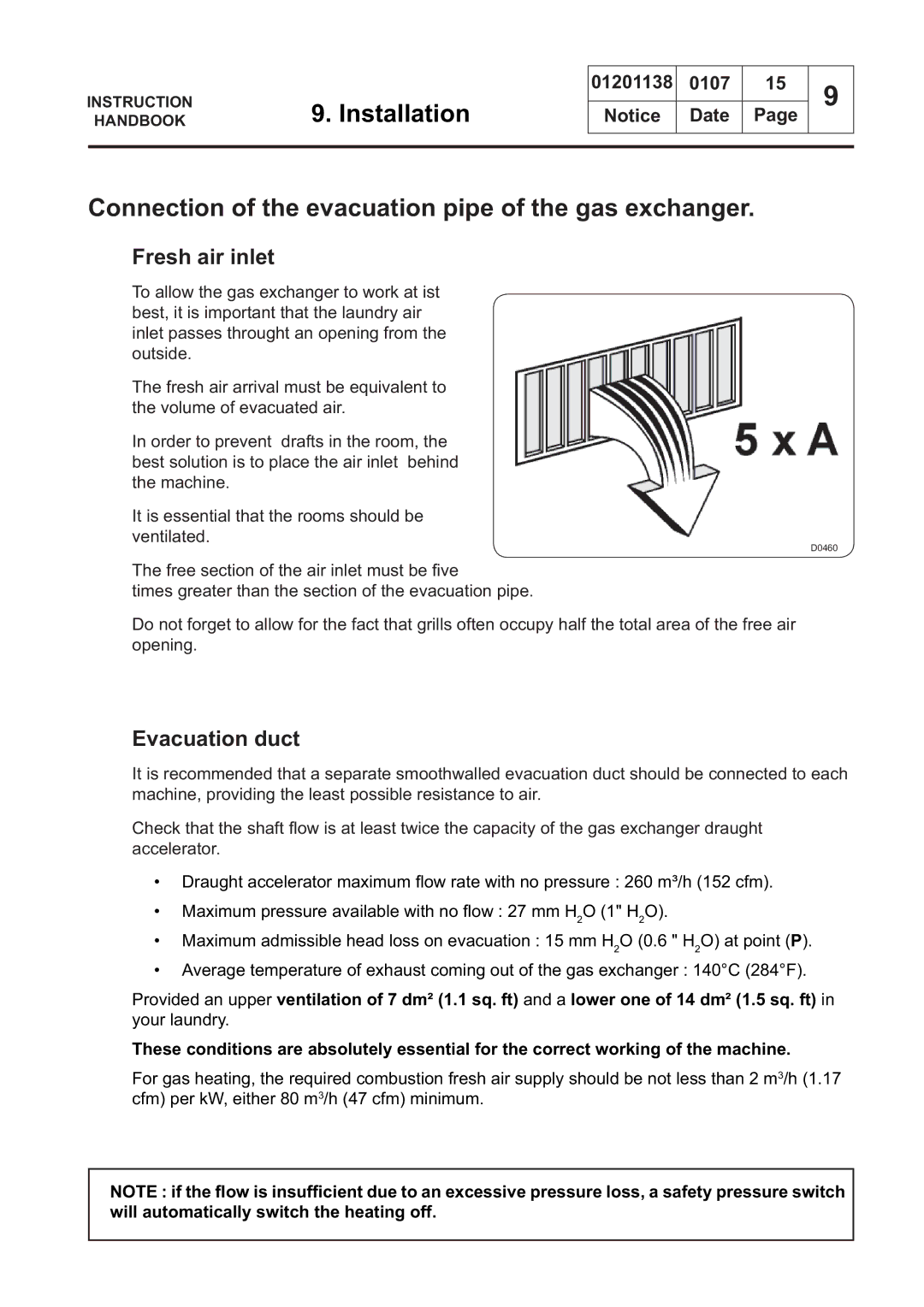
INSTRUCTION
HANDBOOK
| 01201138 | 0107 | 15 | 9 | |
9. Installation | Notice | Date | Page | ||
|
Connection of the evacuation pipe of the gas exchanger.
Fresh air inlet
To allow the gas exchanger to work at ist best, it is important that the laundry air inlet passes throught an opening from the outside.
The fresh air arrival must be equivalent to the volume of evacuated air.
In order to prevent drafts in the room, the best solution is to place the air inlet behind the machine.
It is essential that the rooms should be ventilated.
D0460
The free section of the air inlet must be fi ve
times greater than the section of the evacuation pipe.
Do not forget to allow for the fact that grills often occupy half the total area of the free air opening.
Evacuation duct
It is recommended that a separate smoothwalled evacuation duct should be connected to each machine, providing the least possible resistance to air.
Check that the shaft fl ow is at least twice the capacity of the gas exchanger draught accelerator.
•Draught accelerator maximum fl ow rate with no pressure : 260 m³/h (152 cfm).
•Maximum pressure available with no fl ow : 27 mm H2O (1" H2O).
•Maximum admissible head loss on evacuation : 15 mm H2O (0.6 " H2O) at point (P).
•Average temperature of exhaust coming out of the gas exchanger : 140°C (284°F).
Provided an upper ventilation of 7 dm² (1.1 sq. ft) and a lower one of 14 dm² (1.5 sq. ft) in your laundry.
These conditions are absolutely essential for the correct working of the machine.
For gas heating, the required combustion fresh air supply should be not less than 2 m3/h (1.17 cfm) per kW, either 80 m3/h (47 cfm) minimum.
NOTE : if the flow is insufficient due to an excessive pressure loss, a safety pressure switch will automatically switch the heating off.
